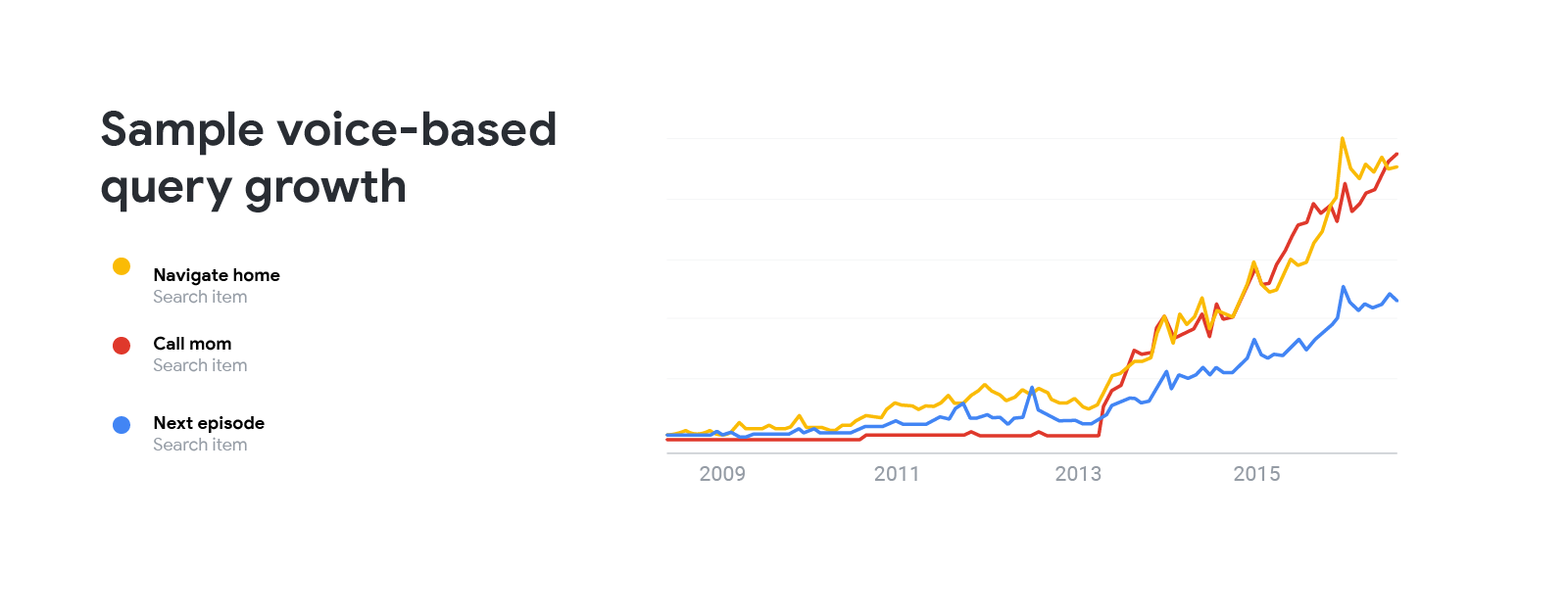Voice assistance is changing how consumers live, search and shop. Brands that embrace the age of assistance have the opportunity to not only unlock hyper engagement but also shape the tech and consumer behaviour. Discover how your brand can prep for a voice-first world.
As marketers, it’s our job to spot trends and understand what the next big thing is. One trend on the tip of every marketer’s tongue is voice assistance. As smart speaker sales soar and billions of people around the world with a smartphone in their pocket, this trend looks like it’s here to stay. Just as we moved from desktop-first to mobile-first — we’re now witnessing the shift to the voice-first era.
Voice is the new normal
Voice tech has come on leaps and bounds — encouraging platforms to embrace it and empowering consumers to feel comfortable using it. And with consumers around the world now talking to their phones, TVs, speakers and cars — voice is quickly becoming the new normal.
Voice is faster and more convenient than typing — especially on mobile when we’re on the move and our hands are occupied. People also like to talk because it comes natural to them. People used keywords when Google Search was first launched and throughout the years our algorithm learned to interpret more conversational terms and queries. But digital assistants represent a cultural and technological shift that goes beyond the question and answer format to interaction.

As we move away from keyword searches to actionable queries, people now expect to get things done, rather than just be served up information. This shift from keywords to interaction means brands will need to redefine their approach to discoverability and think about how they “talk” to consumers.
The human touch
The term “conversational commerce” was first used in 2015 by Chris Messina1, an ex-Uber, ex-Google employee, who predicted that messaging apps would be used to drive online sales in a more conversational way — in real time and with real interaction with brands.
Commerce has and always will be conversational. Traditionally, people talked and shared their needs with in-store shopping assistants. Conversational commerce in the era of Voice comes down to delivering this human touch with NLU (Natural Language Understanding).
Engagement in the era of voice means finding the right moments when brands can be helpful and interact with customers when they are on the go. Interaction means that brands are not only telling customers things, they are listening and understanding questions and are ready to assist. Empowered digital assistant users require customised support. So how can businesses prepare themselves for when people begin to “talk” with them and expect interaction? One way is to begin to develop brand personas.
Creating a brand persona
Personas make us the individuals we are. Shopping in the age of digital assistance is personal and brands will need to create a persona to position themselves.
The first step in creating a persona is understanding the brand. Is the brand funny or serious? Is the brand exciting and friendly or reserved and business like? Brand style guides can help on the roadmap to creating an authentic persona.
Brands need to consider if their users are anxious and want to get things done right away or if they’re in a more relaxed state of mind
Think about who the user is and their state of mind when they’re interacting with the brand. For example, a customer ordering a pizza is very different from a customer looking for a bus schedule. When ordering a pizza people tend to be in a relaxed state of mind so a pizzeria can afford to take a friendlier approach to tone. On the other hand, people looking for a bus schedule are commuters and generally want the information fast and without frills.
Brands need to consider if their users are anxious and want to get things done right away or if they’re in a more relaxed state of mind. A brand’s persona and tone can alter between verticals, markets, products and the user’s state of mind.
The bottom line? Start putting together a creative strategy together to tackle the hard questions and bring a personal touch and human element to your brand’s voice.
Developing a brand persona
Once a brand has established what its voice sounds like, it’s time for the developers to create dialogue as natural and engaging as possible. Dialogflow is an end-to-end developer platform that provides NLU, helping brands to interact with customers and create engaging experiences on a personal level.
Actions on Google
People use Google Assistant to get things done by talking directly with the Assistant. Developers can also use Actions on Google to extend the assistant and implement a “Conversation Action”. Users can initiate action by saying a phrase like “Ok Google, talk to Pizza Brothers”. This action kicks off the conversation with any given business and provides the user with the opportunity to receive direct assistance from the brand.
As consumers begin to assess brands as people and expect interaction, it's crucial that brands prepare personas and start to think about how they will engage in a voice-first world.







